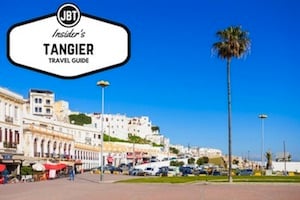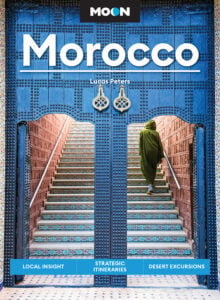
One of Morocco’s most famed rulers was Sultan Moulay Ismail. He was 27 when he came to power and ruled from 1645-1727. During his reign, the country’s capital city was transferred to Meknes, where his slaves brought to life his splendid visions for the city’s architectural masterpieces. Often called“The Bloodthirsty” for his harsh, often violent rule, not only did Moulay Ismail pillage nearby Volubilis for all of its precious marble and other materials to build his palace in Meknes, he was rumored to have buried his slaves within the palace walls if he was dissatisfied with their work. History tells us that when it was complete, the palace of Meknes rivaled that of Versailles, though much of the palace was destroyed in the powerful Lisbon earthquake of 1755 that rippled all the way through Europe and Morocco just a few years after Moulay Ismail’s death. Luckily, a small part of the palace’s grandeur lives on in the incredible Royal Stables of Meknes.
Moulay Ismail was known for his love and admiration for horses. The Royal Stables of Meknes are a feat of ingenuity. They used to provide stabling for 12,000 royal horses. Even more incredible, each horse had its own groom and a slave who made sure that all of its needs were met and that its stable was kept extremely clean. It is said that Moulay Ismail was fanatical about his horses with all 12,000 of them treated better than even his prized harem.
The Royal Stables of Meknes: An Engineering Delight
The location of the Royal Stables of Meknes, near the Agdal Basin, and the construction were both carefully considered to accommodate the large number of horses horses. The rows of the stables were placed at specific angles. These angles gave stable masters the highest possible visibility of their horses across a large area. The building itself has massive walls, original cedar wood doors, arched ceilings, very small windows, and a brilliant system of underflow water chambers. The high ceilings and small windows kept the stables cool in the summer and warm in the winter, while the canal constantly fed the stables with fresh water. The royal horses were always kept at an ideal temperature and never lacked clean drinking water.
The Royal Stables of Meknes: An Extraordinary Granary
Adjacent to the royal stables, Moulay Ismail built an enormous granary, Heri Es-souani. The granary was built behind the stables and over a reservoir. They held food and grains for the horses. The granaries were so huge that they could store enough grain for 20 years.
However, storing enough grain to feed 12,000 horses for 20 years meant that long-term storage was a consideration. Because of the amount of grain, the air had to maintain constant circulation and the temperatures cool. This is why the granary walls are thick and there was a hanging garden was developed on the granary’s roof. The enormity of this granary must be seen in person to be believed.
The Royal Stables of Meknes: A UNESCO World Heritage Site
While the roof of Heri Es-souani resisted the 1755 Lisbon earthquake, the ceiling of the Royal Stables of Meknes did collapse. Today, most of the stables are in ruins. They are thought to have been seven times longer than what is visible today. What remains of the archways are striking and add a sense to the period and the grand scale of Moulay Ismail’s vision for his rule and for Morocco. The ruins are the evidence not only to Moulay Ismail’s admiration for horses but also, the lengths he went to in order to ensure that his horses were well fed and lived comfortably. The attached granary as well as the royal stables are listed UNESCO world heritage sites and are considered some of the most fascinating pieces of Moroccan history one can visit while in Meknes. It is certainly a recommended stop when in the city and considered by many to be a real overlooked gem and one of the city’s top attractions.
You might be interested to know that the Royal Stables of Meknes provide some of the backdrop scenery for The Jewel of the Nile and Ishtar, two movies filmed in Meknes.
Today, the Royal Stables of Meknes lead to the Haras, which is the stud farm where thoroughbred Arabians, endangered African and even Arab barbs are being bred. The Haras was built in 1914 and is the largest stud farm in North Africa with 450 horses and 80 hectares.
The Royal Stables of Meknes and the Heri Es-souani granary can be visited daily from 9am-noon and from 3pm-6:30 pm. Entrance tickets are 10 dirahams.
About the Author
 Kenza Hjiej is a young Moroccan engineer from Fez who is fueled by curiosity, humor, and kind-heartedness. She was born with the passion for reading, writing, singing and traveling. In her spare time, Kenza writes articles about her country, a patchwork of mesmerizing landscapes, tasty food, and beautiful people with a unique set of values that have made her who she is. She hopes that the people traveling through her country enjoy it and come away with a sense of what makes it so incredible.
Kenza Hjiej is a young Moroccan engineer from Fez who is fueled by curiosity, humor, and kind-heartedness. She was born with the passion for reading, writing, singing and traveling. In her spare time, Kenza writes articles about her country, a patchwork of mesmerizing landscapes, tasty food, and beautiful people with a unique set of values that have made her who she is. She hopes that the people traveling through her country enjoy it and come away with a sense of what makes it so incredible.








